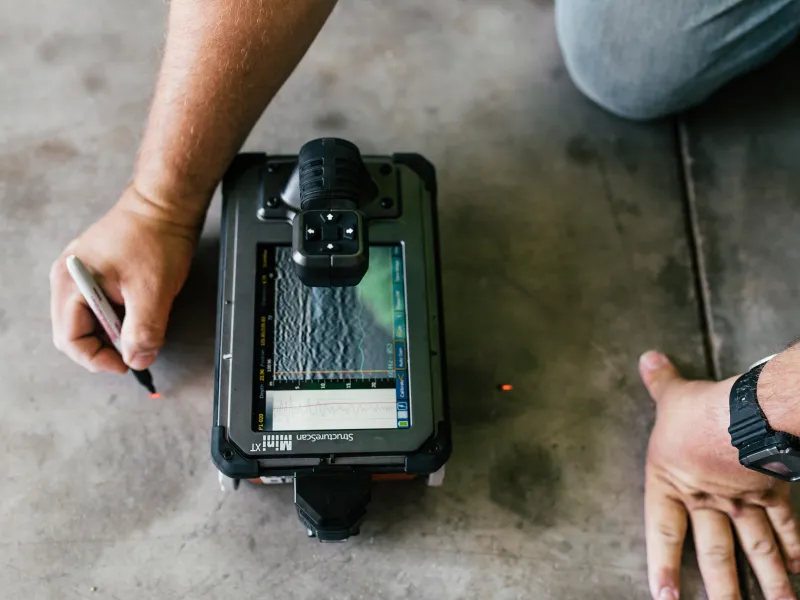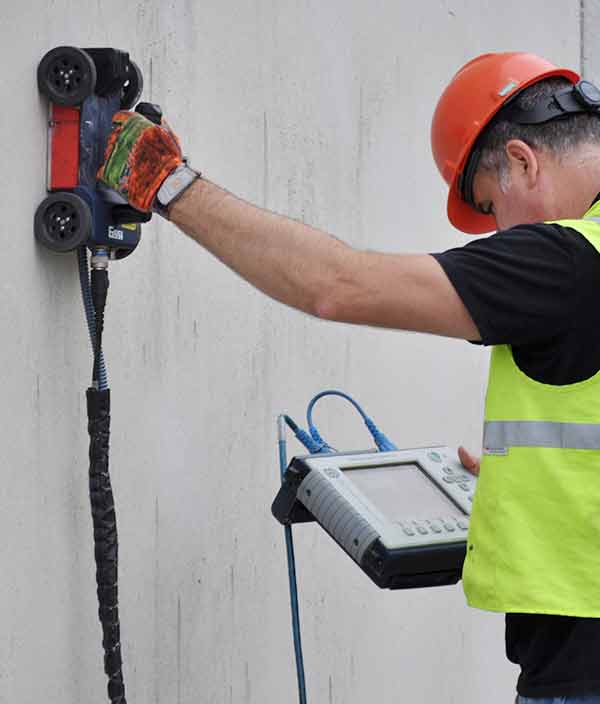Reliable Concrete Scanning Techniques for Construction Tasks
Wiki Article
Unveil the Transformative Power of Concrete Scanning in Maximizing Performance and Safety
Concrete scanning has actually become a crucial tool in the building and construction industry, providing unequaled advantages in improving project efficiency and making sure security criteria. By making use of innovative innovation, concrete scanning permits professionals to see beyond the surface, discovering covert intricacies that might affect the architectural honesty of a structure. The transformative power of concrete scanning hinges on its capability to give comprehensive understandings and real-time information, transforming exactly how projects are planned and implemented. As we explore the details of this ingenious technique, a globe of opportunities opens, showcasing a brand-new era of building and construction practices that focus on accuracy and protection.Value of Concrete Scanning
Making sure the architectural stability and safety and security of construction jobs begins with the critical action of conducting extensive concrete scanning. Concrete scanning is a non-destructive approach made use of to spot and map subsurface elements within concrete structures.The importance of concrete scanning can not be overemphasized, as it plays a vital role in preventing mishaps, reducing task hold-ups, and ensuring the lasting longevity of the construction. By determining possible hazards prior to the construction stage starts, contractors can carry out ideal precaution and make informed choices regarding the style and implementation of the task. In addition, concrete scanning helps in enhancing task timelines and budget plan by staying clear of unanticipated prices and delays that might arise because of unpredicted blockages within the concrete. Eventually, purchasing complete concrete scanning is an aggressive strategy that boosts both performance and safety and security in building tasks.
Exactly How Concrete Scanning Works
Concrete scanning operates as an important tool in building and construction jobs by employing innovative innovations to spot and map subsurface components without triggering structural damages. Ground Permeating Radar (GPR) and Electromagnetic Induction (EMI) are two main methods utilized in concrete scanning.Throughout the scanning process, the data gathered is assessed in real-time, allowing immediate recognition of potential hazards or challenges underneath the surface area. By using these advanced technologies, concrete scanning dramatically reduces the risk of expensive problems and injuries on building and construction sites.
Benefits of Concrete Scanning
Using sophisticated scanning innovations in building jobs uses a wide variety of benefits, improving both effectiveness and security on-site. One of the primary advantages of concrete scanning is the capability to discover and situate ingrained items such as rebar, post-tension cables, and channels accurately. By identifying these components prior to boring or reducing into concrete structures, the risk of unintentional strikes is considerably reduced, stopping potential injuries to employees and damages to the structure itself. Concrete scanning helps in planning and developing more properly, as it gives exact information concerning the place and deepness of architectural elements.
Case Research Studies: Concrete Scanning Success

In another situation, a construction company used 3D concrete scanning to assess the condition old concrete frameworks in a historic structure. The detailed scans supplied beneficial insights into the level of deterioration and assisted prioritize upkeep initiatives properly. By proactively addressing locations of issue recognized with scanning, the business was able to extend the life-span of the structure and make sure occupant security.
These study highlight the transformative power of concrete scanning in improving visit this site performance, precision, and safety and security in building tasks.
Carrying Out Concrete Scanning in Projects
Implementing innovative scanning innovations throughout building and construction tasks has actually come to be increasingly vital for boosting accuracy and safety and security. By incorporating concrete scanning into project planning and implementation, building and construction groups can recognize prospective dangers, such as rebar or post-tension wires, hidden within concrete structures. This positive method reduces the risk of accidents, hold-ups, and expensive rework, ultimately resulting in much more efficient task timelines and spending plans.To apply concrete scanning properly, job managers ought to team up closely with experienced scanning experts to identify the most ideal scanning methods for the specific project needs. Engaging scanning experts from the very early phases of a project makes it possible for the group to create comprehensive scanning strategies that resolve vital locations of worry and make certain detailed information collection.
Moreover, incorporating concrete scanning into normal project process can improve decision-making processes, as real-time check data supplies immediate understandings right into the problem of concrete frameworks - Concrete Scanning. This data-driven technique facilitates educated problem-solving and enables teams to make adjustments immediately, fostering a culture of performance and security throughout the task lifecycle

Final Thought
In verdict, concrete scanning plays an essential role in improving performance and safety in building tasks. By using advanced innovation to identify and map out underlying structures within concrete, this procedure aids to avoid pricey blunders, guarantee structural stability, and decrease risks on site. With the capability to discover concealed components and give accurate data, concrete scanning confirms to be an important tool for enhancing job results and optimizing general success.Concrete scanning is a non-destructive technique utilized to find this link and map subsurface aspects within concrete frameworks. Furthermore, concrete scanning assists in maximizing task timelines and spending plan by staying clear of unanticipated prices and hold-ups that might emerge due to unforeseen obstructions within the concrete. One notable instance research includes a large-scale renovation task where concrete scanning played an important function in ensuring task success.In one more situation, a building company utilized 3D concrete scanning to analyze the problem like this of maturing concrete frameworks in a historic building. By incorporating concrete scanning into project preparation and execution, building and construction teams can identify potential threats, such as rebar or post-tension wires, concealed within concrete structures.
Report this wiki page